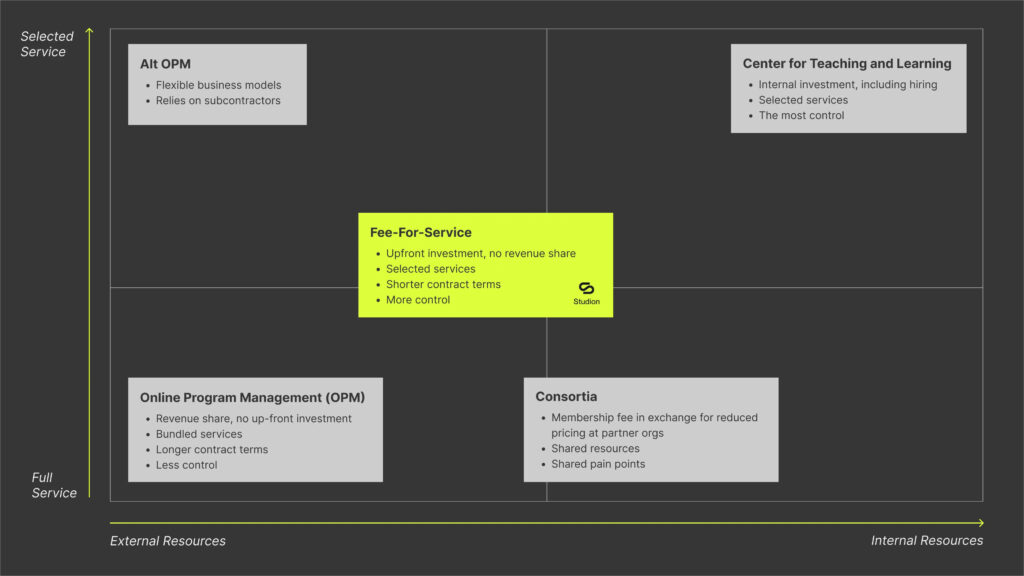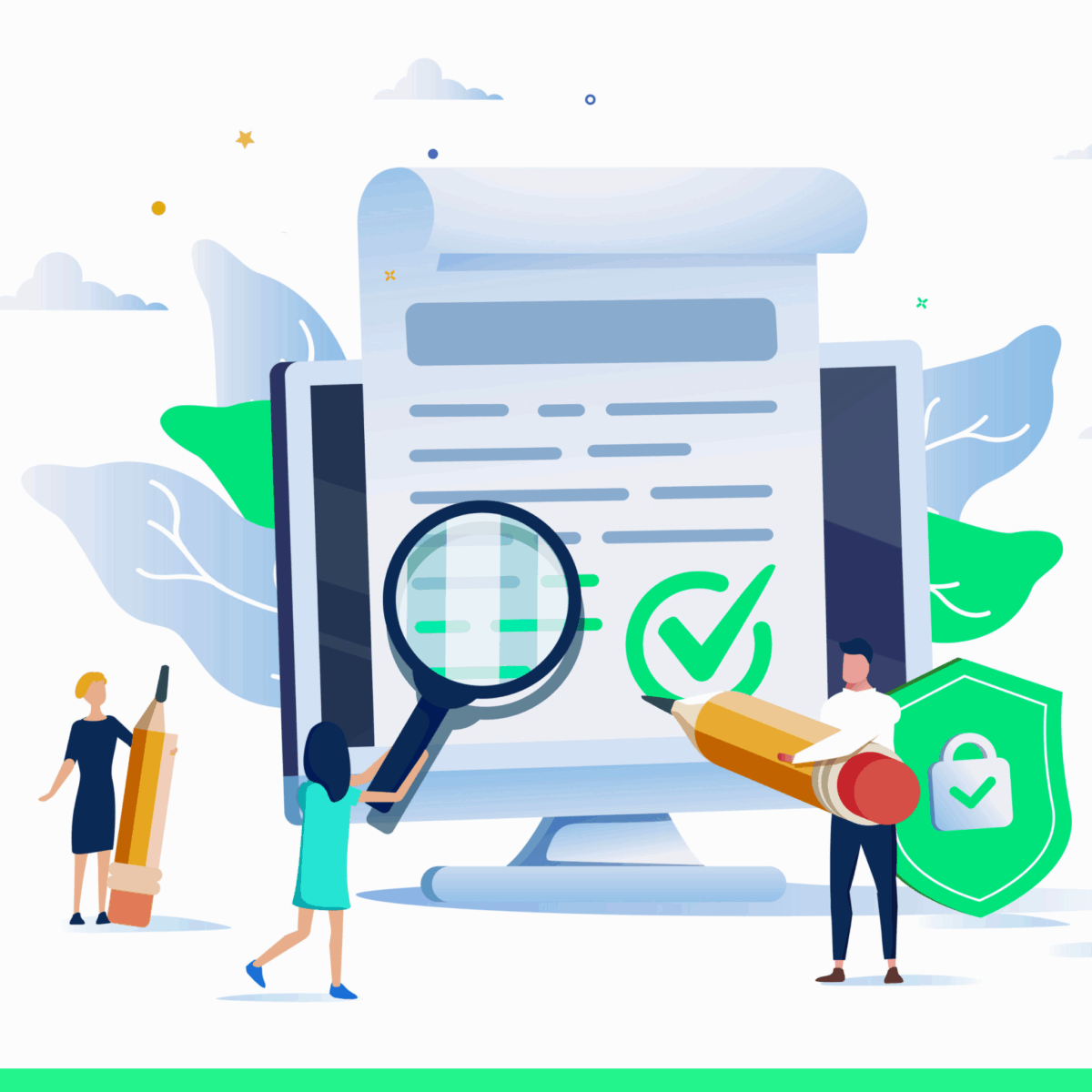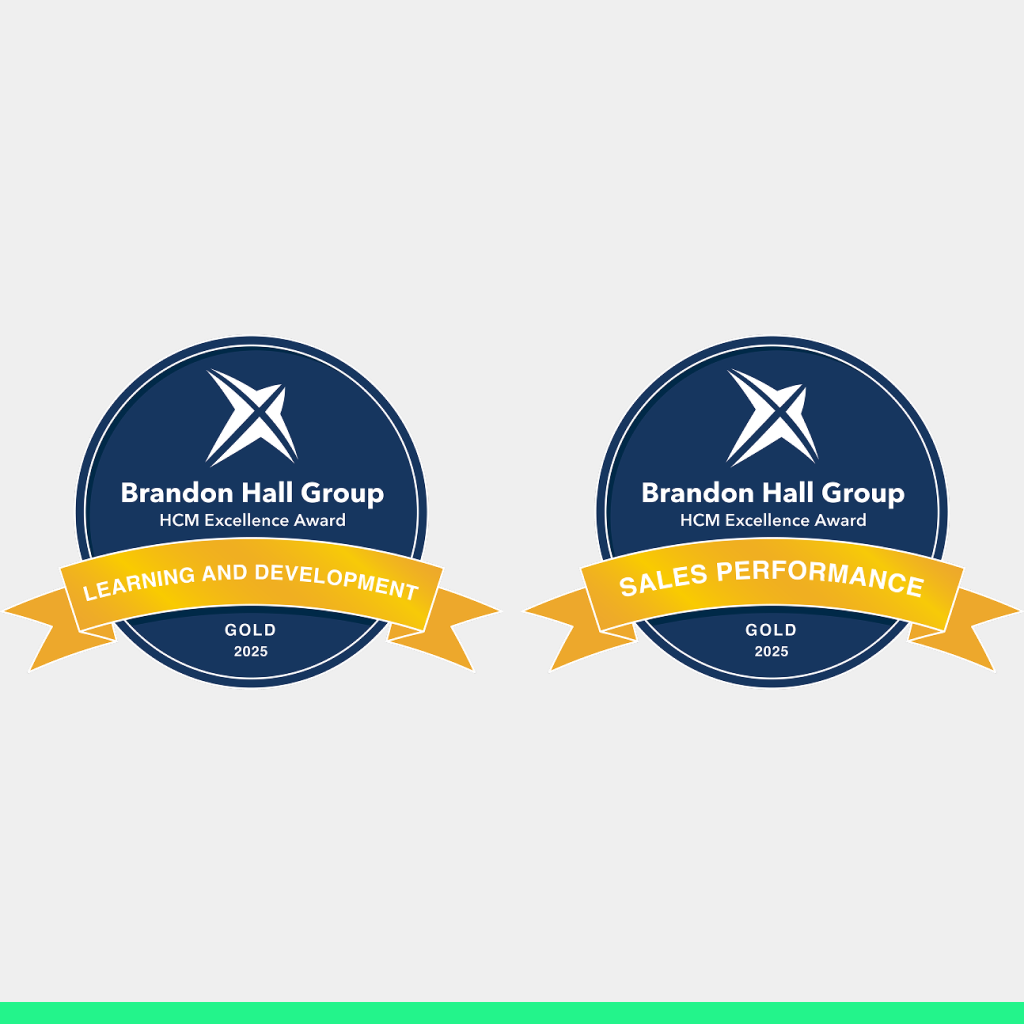Building a digital learning experience is no small undertaking. While some organizations choose to build out an internal team to take on the work of crafting a strategy, designing the experience, building out the platform and maintaining it, many opt to work with an outside partner.
Hiring a partner like Studion has many benefits. We bring a deep level of expertise, an understanding of the broader market, advanced technology skills, our High Engagement at Scale framework, and not least of all a team of talented people to execute the work.
The partners you choose have a huge impact on the success of your online learning program. One of the most critical factors to consider is your partner’s business model and the contract terms you’ll be entering into.
As a fee-for-service partner, we are confident that this model is best for our clients, their learners, and our business. Let’s talk about your options for how to approach building an online learning program by comparing the contrasting the fee-for-service and online program management (OPM) business models – their structure, how they differ, and the pros and cons of each.
Partnership models for online learning programs
The options for building an online learning program fall on the axes of external to internal resources and full service to selected service. As the landscape evolves, more nuanced and blended models will emerge, but this online learning model* is a good starting point.

OPMs are the most external and full service option, meaning they often act as more of a plug-and-play solution for organizations who don’t have a lot of internal resources. Fee-for-service companies offer a middle ground between OPMs and choosing the most internal and selected service option of creating your own Center for Teaching and Learning, which can monopolize resources.
The route you choose depends on several factors. Here are a few things to consider:
- Your budget
- Your timeline
- Your internal resources and capabilities
- How much control you want over the production process and learning experience platform
- The level of quality and differentiation you require
- Desired services
- Your plans for growth and desired return on investment
Pros and cons of OPMs and fee-for-service models for online learning
OPM pros and cons
Historically, the OPM model has been popular because it offers organizations with small budgets the ability to start up an online program with no upfront costs and minimal internal resources. But as online learning evolves and students and organizations have higher standards for excellence, many customers are seeing major downsides to this approach. Outsourcing content creation to an OPM can compromise quality, deny universities the ability to do what they do best–teach–and ultimately harm an institution’s reputation.
Another factor to consider is the loss of control and revenue. OPMs require a revenue-share agreement, typically around 50-70%, and contracts for 5 to 10 years. In exchange, they cover the cost of course development and provide a bundle of services including marketing and enrollment. Since their return hinges on enrollment, OPMs are incentivized to scale programs quickly. Many organizations find the course experience to be rigid, defined by the OPM’s technology preferences with limited options for customization. The University of Southern California’s (USC) decision to sever ties with their OPM company is an example of the shift away from OPMs.
Fee-For-Service pros and cons
Fee-for-service providers are a good fit for organizations who value quality learning experiences tailored to their needs, greater control over their material and production, and ownership of course revenues. In this model, the client pays upfront only for the services they need. With no revenue share, you keep 100% of the revenue from your course. The fee-for-service provider is incentivized to deliver a high quality learning experience in order to earn referrals and repeat business. Scaling your course is supported at the pace that’s best for you. While more internal involvement is required, it’s in service of meeting the individual needs of the organization, preserving the organization’s voice and expertise, and building internal capabilities to facilitate a smooth transition when the time is right. Many organizations find this model supports long-term growth and the differentiation achieved through a custom learning experience reflects well on their brand.
OPM versus fee-for-service pros and cons*
| OPM | Fee-for-service | |
|---|---|---|
| Revenue-Share | Revenue share of 50-70% | No revenue share |
| Investment | No upfront investment | Upfront investment for selected services |
| Contract Length | Long-term commitment of 5-10 years | Flexible-term commitment on a monthly basis |
| Services | Bundled services | Selected services |
| Marketing | Offers marketing and enrollment services in order to meet revenue goals | Typically does not offer marketing and enrollment services, removing any conflict of interest |
| Differentiation | Tends to be generic learning design and technology | Pedagogy-driven learning design and technology agnostic approach provides differentiation |
| Control | Less institutional control; OPM drives process and decision making | More institutional control and flexibility; collaborative approach to decision making |
| Content Ownership | Ownership can be unclear, with copyright issues emerging | Client owns all of their content |
| Production | Removes politics and pushback by outsourcing production | Supports production and building internal competencies; may require internal support and leadership involvement |
Why fee-for-service providers are the future of online learning
At Studion, we’ve seen the online learning landscape evolve significantly over the 20 years we’ve been in business. As that evolution continues – driven by increasing demand, new technology, and a better understanding of effective learning design – we foresee the fee-for-service partnership model overtaking OPMs in popularity.
With the U.S. Department of Education considering regulation of OPMs and tuition-share agreements, it’s clear that others see the issues with this business model, too. In addition to the concerns we’ve already discussed, the marketing tactics used by OPMs have come under fire for being aggressive and misleading. Now, students and learners are demanding transparency about the partners institutions work with to build their courses.
Our mission at Studion is to to design, build, and support the world’s most engaging digital experiences in Learning and Life Sciences. We are confident that our fee-for-service model supports us in this mission and delivers the best results for our clients.
*Both the above data table and chart are based on a joint Studion and Eduventures webinar, “Building Online Programs Without an OPM” originally broadcast in 2017.



